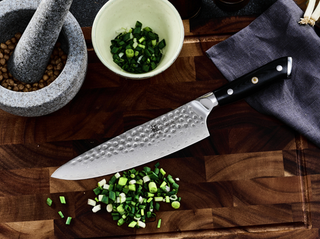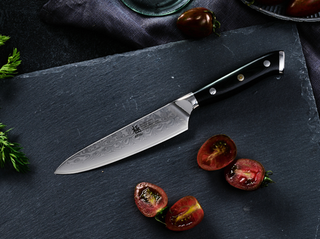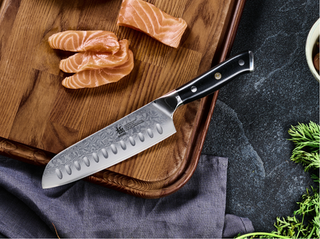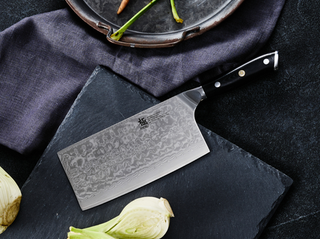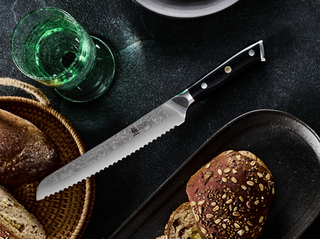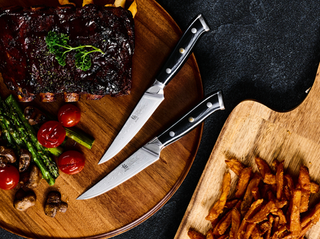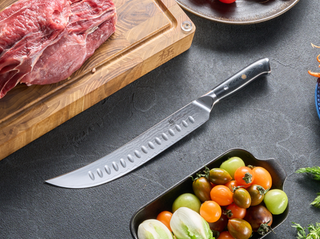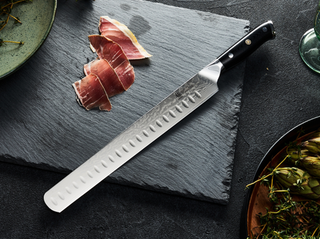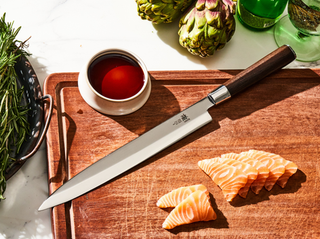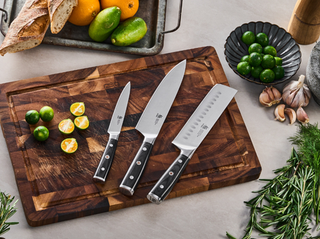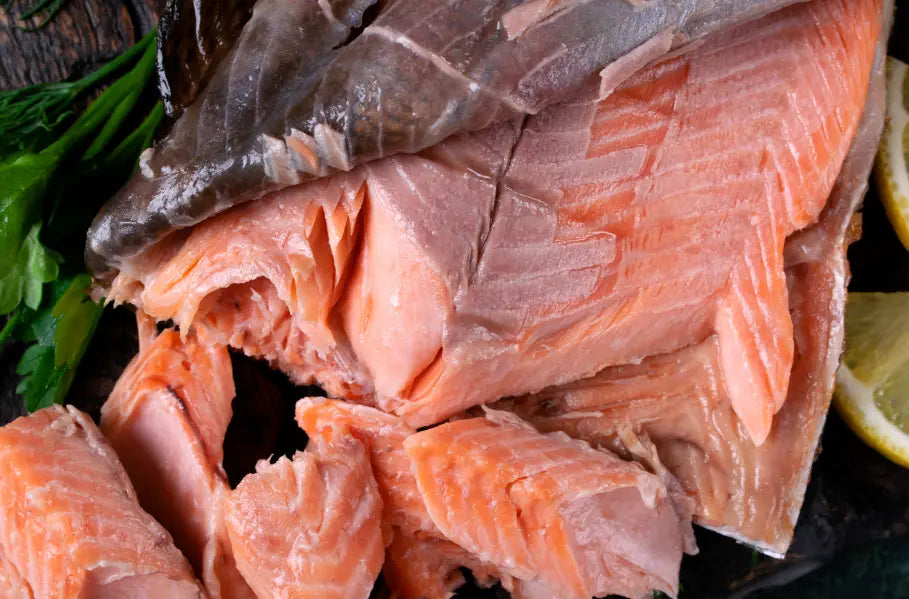What is a rainbow trout? The fish steals the show in being colorful and has a delicate flavor that appeals to seafood lovers' appetites. According to Fly Fishermen, the fish originate from the Pacific Ocean, the watershed of portions of Asia and North America. In North America, they are natives of the United States of America and part of the Canadian West Coast. In Asia, they belong to the Amur River drainage.

Furthermore, you will be surprised to know about the market size of Rainbow Trout. The fish currently shares a value of $ 4.2 billion and is forecasted to reach $7 billion by the end of 2033. You must be wondering why the fishermen are so fond of Rainbow Trout. The reason is that amongst other frozen and canned variants of seafood, Rainbow Trout has always shown a consistent performance record.
If you are making Rainbow Trout for the first time, then you must know how to fillet a Rainbow Trout. Don’t worry; this blog will give in-depth insights into how to fill a rainbow trout, how to fill a rainbow trout boneless, and cook it to perfection.
Let’s Prepare
Before you unleash your inner chef, what is the first thing you do? You prepare. You assemble the culinary, set your workspace, and the ingredients you need to make the meal. In the case of the Rainbow Trout, you would need to do the following:
Gather The Essentials
Sharp Fillet Knife
There is going to be a lot of cutting here; hence, you will require a sharp fillet knife. You can get the ideal ones that are around 6-8 inches from Kyoku Knives. If you explore the website, you will come across the Santoku Knives range. The Santoku attracts cooks with a series of similar knives like 7" Japanese Santoku Knives Damascus Steel, which is bound to startle you by delivering high performance, and the 7" Santoku Knife VG10 Damascus Steel, whose edges prove to be perfect for cutting meat and fruit with complete precision.
Cutting Board
Once your knife is in place, select a stable, non-slip cutting board. Otherwise, the uneven board will disturb your cutting. After all, it is the first time you are filleting a rainbow trout, so it should be flawless.
Clean Kitchen Towels
Lay your hand on clean kitchen towels. Why? You will need to pat the fish to ensure it's not wet and dry from all angles. This impacts a clean-cutting experience.
Pliers
Using pliers will be your call as it is optional, but the tool is helpful in removing pin bones that refuse to come out with bare fingers.
Prepare Your Workspace
Once you commence with the procedure of how to fillet a rainbow trout, prepare your workspace. The cutting board you pick must be clean and your kitchen or the space, where you will be filleting must be well-lit too.
Clean Your Fresh Catch
Did you clean your fresh catch? If your Rainbow Trout has yet to be cleaned then gut them before moving on with filleting. You can browse the internet for tutorials that teach you proper gutting strategies specific to which trout are you cooking.

The Filleting Of Rainbow Trout: The Cutting Begins
We have finally arrived at the main section of the blog where we will teach you how to fillet a rainbow trout with a few easy steps. Read the following steps thoroughly:
Make The Initial Cut Carefully
- Take the trout and lay the fish sideways on the cutting board. The back should face you.
- Look for the gill plate, which will have a V-shaped opening behind the head of the fish.
- Grab your sharp-edged fillet knife and carefully make the initial cut just behind the gill plate. Angle the cut slightly upwards that should go towards the backbone.
- Then continue the cut along the top of the head, following the body’s curve, until the slit reaches the tail.

Separation Of The Flesh From The Backbone
- Carefully insert the blade of the knife between the flesh and the ribcage, keeping the tool almost parallel to the cutting board.
- Separate the flesh from the bones by gently gliding the knife along the body. Do it the way you saw wood.
- Don't cut into the ribcage of the fish. Maintain an easy pressure. Use your fingers to feel the backbone as you navigate the knife.
Fillet Detachment
- You will see the dorsal fin as you go down the Rainbow Trout. Be careful when cutting through the flesh that is present at the base of the fin, which needs to be removed along with the fillet.
- While the knife is in your control, continue cutting along the ribcage and stay close to the bones until the tail comes.
- If you see the tail arriving, angle your knife downwards so you do not lose any meat during the filleting.
- Partially cut the tail and lift the fillet away from the other body parts that you will not use.
Repeat The Cycle
Once you are done cutting the front side, flip the Trout over and repeat the cycle of removing the fillet.
Wash and Prepare
- Place your fillets under cold water to remove leftover blood and debris.
- Lastly, pat the raw seafood with paper towels before cooking until it goes dry.

Some Tips To Consider
Since we have guided you on how to fillet a rainbow trout, we thought to give you some additional tips to consider:
Is Your Knife Sharp?
Avoid filleting with a blunt-edged knife, as that will make the cutting procedure tedious. Go for a sharp-edged one, or sharpen your knives to make fillets within minutes.
Don’t Dispose Of The Trimmings
Once you have completed cutting the trout, don't dispose of the trimmings like head, bones, and leftover pieces as that benefit in adding flavor to the fish stock.
Frequently Asked Questions (FAQ)
Q1: Is rainbow trout the same as salmon?
A: Rainbow trout belongs to the salmon family (Salmonidae) and is closely related to salmon species. The term “salmon” is a commercial name that covers various fish including Atlantic salmon, Pacific salmon, and rainbow trout.
Q2: How do I select fresh rainbow trout?
A: Choose trout with bright, vivid skin, firm flesh, natural fresh fish aroma, clear eyes, and intact scales. These signs indicate freshness. Having the right tools, such as a high-quality kitchen knife, will make cleaning and preparing the fish easier and more effective.
Q3: What are the nutritional benefits of rainbow trout?
A: Rainbow trout is rich in high-quality protein, Omega-3 fatty acids, and natural antioxidants like astaxanthin. These nutrients support cardiovascular health, brain function, and overall wellness.
Q4: How should I store sliced rainbow trout?
A: After filleting, store the slices immediately in the refrigerator or freezer. Freezing prolongs freshness and inhibits bacterial growth. Avoid repeated freezing and thawing to keep the fish delicious.
Q5: What makes Kyoku knives a great choice for filleting fish like rainbow trout?
A: Kyoku's Japanese knives stand out because of their their high-quality blades. This sharpness allows for smooth, clean cuts that preserve the delicate texture of fish fillets. Plus, their ergonomic handles provide excellent control and comfort during filleting tasks.
Conclusion
With this guide and a little practice, filleting rainbow trout will become second nature. You'll be well on your way to preparing restaurant-worthy dishes and impressing your loved ones with your culinary skills.
